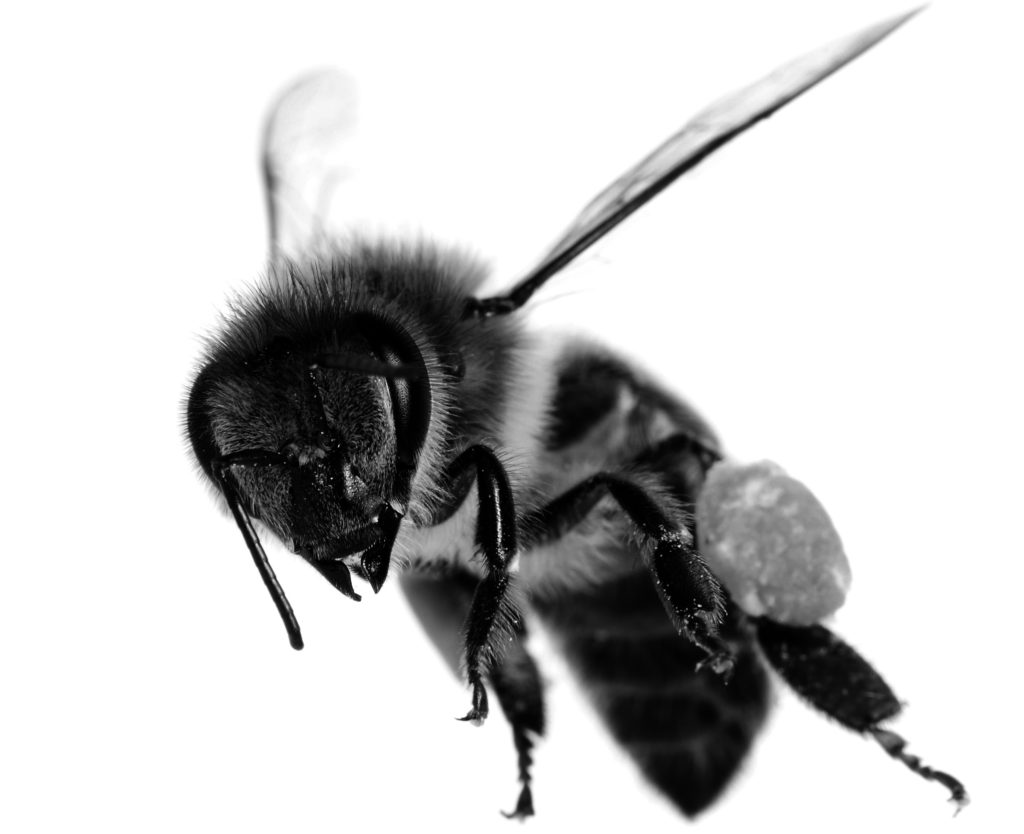Bee Lines: Insects in decline
by Sam Hall – 
“Insect Armageddon” is how the NY Times in the Science section on 12/5/17 described the 75% loss of all insects including pollinators in the past 26 years. While the article does not point fingers, I would ask that you consider the following. I believe it was about 26 years ago when the neonicotoid family of pesticides, first started being used in large quantities.
The name of these pesticides derives from the word “nicotine” which unfortunately is known to everyone. I am told that it’s use as an insecticide came about when workers at a tobacco factory noticed that beech trees directly down wind from the factory had no insects in them while the other beech trees did.
This pesticide or insecticide if you want to call it either you will be correct, is primarily used to treat corn and soy bean seeds prior to planting. The first devastation is done when the seeds are sown. To get the seeds to flow more smoothly out of the planter, graphite is used. The slightest breeze will blow this graphite laden now with the insecticide into the air and carry it up to a football field away depending on the strength of the breeze.
A few years ago one of our local commercial beekeepers was wintering his bees in Florida and a nearby farmer was planting pre-treated seeds and as a result he lost a couple hundred colonies. However, that is not where the real damage is being done. The neonicotoid will stay in the soil for five years. Therefore any plant planted in the soil will have the poison in it. Corn is air pollinated and rarely will the bees take pollen from corn. However, in the next five years there may be crops of sunflowers, cucumbers, pumpkins, squash and other numerous crops the bees do pollinate grown in the same soil. The bees will then gather the pesticide with the pollen and nectar. In addition to the five years the insecticide has a half-life of 19 years in the soil.
When the bees carry home nectar containing this insecticide the effect is on the larvae. When the queen lays a fertilized egg that egg hatches in three days into a larvae which is a shrimp like creature and is very hungry. After being fed only a few days the larvae fills the cell The bees use the nectar and pollen from these plants to make “bee bread” which is fed to the developing and growing larvae. If the affected larvae survive and some don’t they are weak bees, they forage too early, they have a shorter life span.
There is another more direct effect on humans. On the farm in Allegany County where I grew up there was a saying “you had to eat a peck of dirt before you died”. To some extent that is true. We live in a too sanitary environment for our own good. In dirt there are microbes that we need for proper digestion. In recent years people suffering from irritable bowel syndrome and Crohn’s disease have had relief by being treated with these microbes. The neonicotoids kill these microbes in the soil.
From an environmental standpoint I have not heard one single reason these pesticides should not be banned as they are in Europe. But it may be too late. How long has it been since you drove through a cloud of insects and had to turn your windshield wipers on to see? Ask that question to anyone under thirty as I have and the answer is never.
If the above information is correct. Humankind is in for life changing events. Fruits and vegetables will skyrocket in price. Some might be unavailable at any price, such as almonds. We will learn to exist on gruel made primarily from rice.
I hope I’m wrong and I’m misinterpreting what I’m seeing and reading. I would like to think that we will pass onto our children and grandchildren a livable planet not literally the “Third Rock From the Sun”.